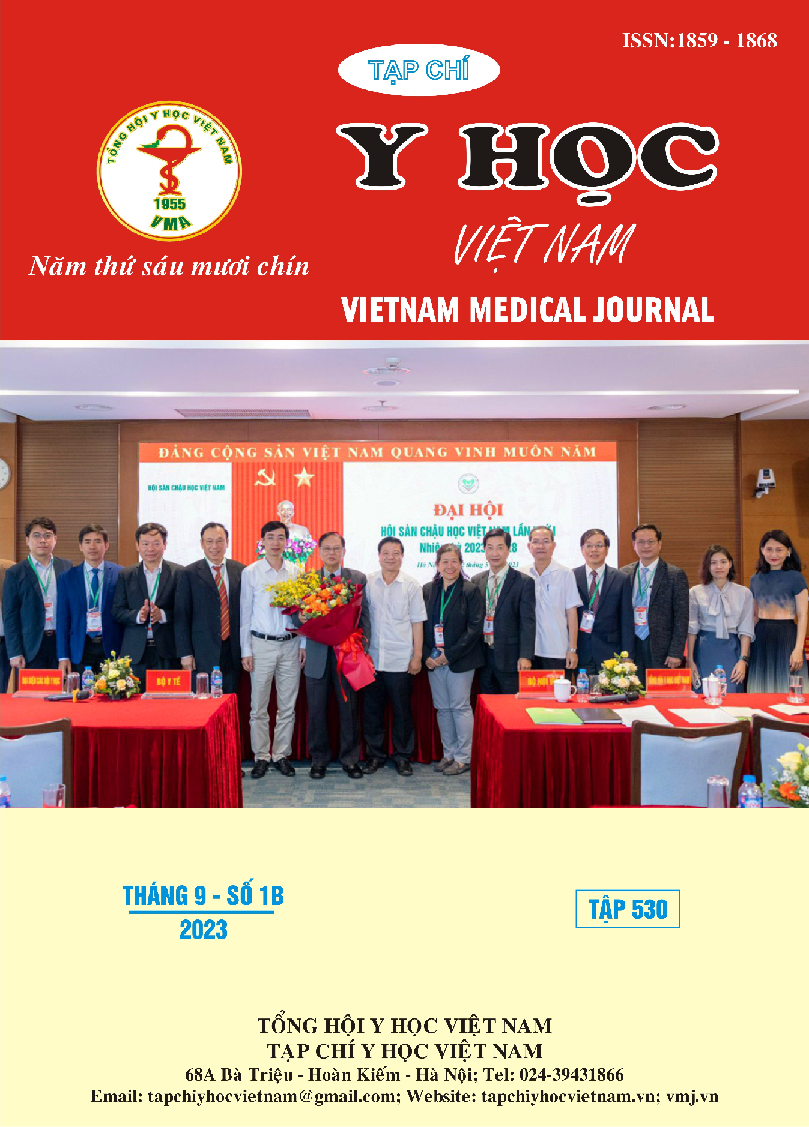INVESTIGATION ON MANAGEMENT OF COMMUNITY – ACQUIRED PNEUMONIA ON INPATIENTS AT BACH MAI HOSPITAL FROM 10/2022 TO 06/2023
Main Article Content
Abstract
Objective: To investigate risk factors, bacterial pathogens and the indication of antibiotics among inpatients with community – acquired pneumonia (CAP) at Bach Mai Hospital. Subject and method: A cross – sectional study was conducted on 83 patients with CAP admitted to the Centre of Respiratory at Bach Mai hospital from October 2022 to June 2023. Medical records were reviewed for data analysis. Result: Average age is 63,1±1,8. There is no significant difference between male and female patients in all age groups. The most common comorbidity is diabetes (27,7%), followed by chronic pulmonary diseases (24,1%). The incidence of isolated bacteria was relatively low (8,4%), mainly Klebsiella pneumoniae. Combination of two antibiotics was the most common first therapy, with the two most indicated antibiotics being Ceftazidime (42,2%) and Levofloxacin (27,7%). There were 96,4% of patients successfully treated. Conclusion: The study results show that the rate of detecting microbial etiologies is still low and the choice of antibiotics should consider risk factors and comorbidities, as well as adherence to guidelines for the management of CAP, avoiding the overuse of broad – spectrum antibiotics.
Article Details
Keywords
Community – acquired pneumonia, CAP, management, antibiotics.
References
2. Mandell, Lionel A., Richard G. Wunderink, Antonio Anzueto, et al. “Infectious Diseases Society of America/American Thoracic Society Consensus Guidelines on the Management of Community-Acquired Pneumonia in Adults.” Clinical Infectious Diseases: An Official Publication of the Infectious Diseases Society of America 44 Suppl 2 (March 1, 2007): S27-72.
3. Bộ Y tế (2015) Hướng dẫn sử dụng kháng sinh. Quyết định số 708/QĐ-BYT.
4. H. T. Trinh, P. H. Hoang, M. Cardona-Morrell và cộng sự (2015), Antibiotic therapy for inpatients with community-acquired pneumonia in a developing country, Pharmacoepidemiol Drug Saf, 24 (2), 129-136.
5. Ramirez, Julio A., Timothy L. Wiemken, Paula Peyrani, et al. “Adults Hospitalized With Pneumonia in the United States: Incidence, Epidemiology, and Mortality.” Clinical Infectious Diseases: An Official Publication of the Infectious Diseases Society of America 65, no. 11 (November 13, 2017): 1806–12.
6. Ghia, Canna Jagdish, and Gautam Sudhakar Rambhad. “Systematic Review and Meta-Analysis of Comorbidities and Associated Risk Factors in Indian Patients of Community-Acquired Pneumonia.” SAGE Open Medicine 10 (January 2022).
7. Torres, Antoni, Willy E Peetermans, Giovanni Viegi, and Francesco Blasi. “Risk Factors for Community-Acquired Pneumonia in Adults in Europe: A Literature Review.” Thorax 68, no. 11 (November 2013): 1057–65.
8. Phạm Hùng Vân, Nguyễn Văn Thành và Trần Văn Ngọc (2017) Tác nhân vi sinh gây viêm phổi cộng đồng phải nhập viện. Kết quả nghiên cứu REAL 2016- 2017. Y học Thành phố Hồ Chí Minh, tr. 51-63.
9. Metlay, Joshua P., Grant W. Waterer, et al. “Diagnosis and Treatment of Adults with Community-Acquired Pneumonia. An Official Clinical Practice Guideline of the American Thoracic Society and Infectious Diseases Society of America.” American Journal of Respiratory and Critical Care Medicine 200, no. 7 (October 1, 2019).
10. Trần Văn Ngọc (2004) Đánh giá hiệu quả điều trị kháng sinh viêm phổi mắc phải trong cộng đồng. Y Học Thành phố Hồ Chí Minh 8(1), tr. 22-27.


